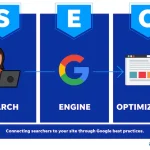Key aspects of Technical SEO Guide: A Complete Overview
Introduction
In the vast landscape of digital marketing, Search Engine Optimization (SEO) stands as a crucial pillar to enhance a website’s visibility on search engines. Among the various branches of SEO, one that holds paramount importance is Technical SEO. This comprehensive guide delves into the intricacies of Technical SEO, providing insights and strategies to optimize your website for both users and search engines.
Table of Contents:
- Website Speed and Performance
- Mobile-Friendliness
- Website Architecture
- Secure Website
- Technical On-Page SEO
- Crawlability and Indexing
- Structured Data Markup
- Mobile Optimization
- Conclusion
Understanding Technical SEO
Technical SEO refers to the backend optimization techniques that focus on improving the technical aspects of a website, ensuring it’s easily crawlable, indexable, and provides a seamless user experience. While content and backlinks play a vital role in SEO, technical optimization acts as the foundation upon which these elements thrive.
Key Aspects of Technical SEO
1. Website Speed and Performance
Website speed directly impacts user satisfaction and search engine rankings. Slow-loading websites tend to have higher bounce rates and lower conversion rates. To enhance speed:
- Compress Images: Use compressed images to reduce page load times.
- Minify Code: Minimize HTML, CSS, and JavaScript files to remove unnecessary characters.
- Utilize Content Delivery Networks (CDNs): CDNs distribute your content across servers globally, decreasing load times.
2. Mobile-Friendliness
As mobile usage soars, Google prioritizes mobile-friendly websites in its ranking algorithm. To ensure mobile-friendliness:
- Responsive Design: Design your website to adapt seamlessly to various screen sizes.
- Mobile-First Indexing: Prioritize mobile version content and design.
3. Website Architecture
A well-structured website aids in easy navigation for both users and search engine bots.
- Clear Hierarchy: Organize content with clear categories and subcategories.
- Sitemap: Create and submit XML sitemaps to help search engines understand your website’s structure.
4. Secure Website
Website security is a ranking factor. An SSL certificate ensures a secure connection between the user and the server.
- HTTPS Protocol: Switch to HTTPS to encrypt data transmission.
Technical On-Page SEO
1. URL Structure
Optimize URLs for both users and search engines.
- Descriptive: Use descriptive keywords in URLs.
- Avoid Dynamic Parameters: Minimize dynamic parameters; use static, readable URLs.
2. Metadata
Craft compelling meta titles and descriptions.
- Keyword-rich: Include relevant keywords.
- Concise: Keep meta descriptions under 160 characters.
3. Header Tags
Use header tags (H1, H2, H3, etc.) to structure content.
- H1 Tag: Use a single H1 tag per page for the main headline.
- Hierarchy: Follow a logical hierarchy with H2, H3, etc., for subheadings.
Crawlability and Indexing
1. Robots.txt
Direct search engine bots on what to crawl or not.
- Disallow: Use to block specific sections from being crawled.
- Sitemap Location: Reference your XML sitemap in the robots.txt file.
2. XML Sitemap
Help search engines discover and index your content efficiently.
- Submit to Search Engines: Submit your XML sitemap via Google Search Console.
Structured Data Markup
Schema Markup
Enhance search results with structured data.
- Rich Snippets: Display additional information in search results.
- Structured Knowledge: Help search engines understand content better.
Mobile Optimization
AMP (Accelerated Mobile Pages)
Create lightweight versions of pages for faster mobile loading.
- Faster Loading: AMP pages load almost instantly.
- Higher Visibility: Google may feature AMP pages in a dedicated carousel.
Conclusion
Technical SEO is the bedrock of a successful website. By implementing the strategies outlined in this guide, you can enhance your website’s performance, user experience, and search engine visibility. Remember, as algorithms evolve, staying updated with the latest technical SEO trends is crucial for maintaining your online presence.
For more information or do you have any relevant questions feel free to Click Here







